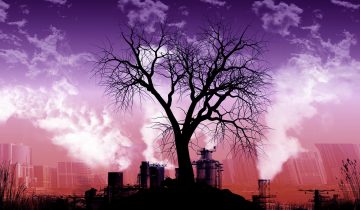Ganga River Pollution: Uma Bharti's Tough Job

For decades now, India’s industrial power has been growing– along with its pollution levels. One of the “best”– or probably worst– examples of this is in the Ganga River.
Holy and Impure
The river, regarded among Hindus as among the most sacred places in the world, is one of the most polluted in the world, with everything from garbage to industrial waste making the water dangerous to both humans and wildlife. People living along the river depend on this poisonous water for drinking, irrigation, bathing, and a number of other activities. Unfortunately, bathing in mercury is not the best idea, however holy the water is.
The Source
So, where exactly does this pollution come from?
Well, a major source is an issue affecting the river from close to its origin– sewage. Many villages and cities along the Ganga have no solution to their waste management problems (due to both lack of money and geographic location) other than to dump untreated sewage into the river. Which is fine for the cities if they dump downstream from their residents, but obviously an issue for anybody downstream. The same is true of industrial waste and other pollutants dumped into the river. Everybody has the right to use the river, but everybody is affected by its use.
Attempts at Change
In 1986, an attempt was made by the Indian government to curb the pollution. It didn’t work out too well, judging by the state of the river. This happened for a variety of reasons– mainly, poor funding. A lot of the money that could have been used to clean the Ganga was used to combat the far more pressing matter of air pollution. Now, that stance needs to reversed– the air can wait for some time; people’s lives are being directly and detrimentally impacted by water pollution.
Cleansing the Future
Things are getting better, though. In 2011, the Indian government took a $1 billion loan from the World Bank to start a focused Ganga-cleaning project. Scheduled to end by 2019, the program is a hopeful long-term solution to the problem.
But could things get done faster?
In just a few weeks in office, India’s new Prime Minister, Modi, is pointing towards a resounding ‘YES’. Headed by a strong advocate for the river, Uma Bharti, the Ministry of Ganga Rejuvenation hopes to making the Ganga pollution-free, allowing nearly half of India’s population access to cleaner water. The government’s strong advocacy for the state of the river is a good sign for everybody involved– and the world can be cautiously optimistic that change for the better will happen in the coming years.
Make Some Change
The government’s current attitude is definitely in the right direction, and very little needs to be done in the way of making them aware of these issues. However, writing a letter or e-mail to the Indian government to express your support of their program could help to reaffirm the commitment to cleaning the river by showing the new ministry that people care about the river, and are glad they are attempting change.
Despite these long-term programs, however, people die daily of water pollution in the Ganga and other rivers. A charity that offers shorter-term sources of clean water for families along polluted rivers is The Water Project. This program saves lives daily by providing safe drinking water, and will hopefully continue to do so until the Ganga is depolluted and safe for all.
[Image Attribute: Vivek Rai]



